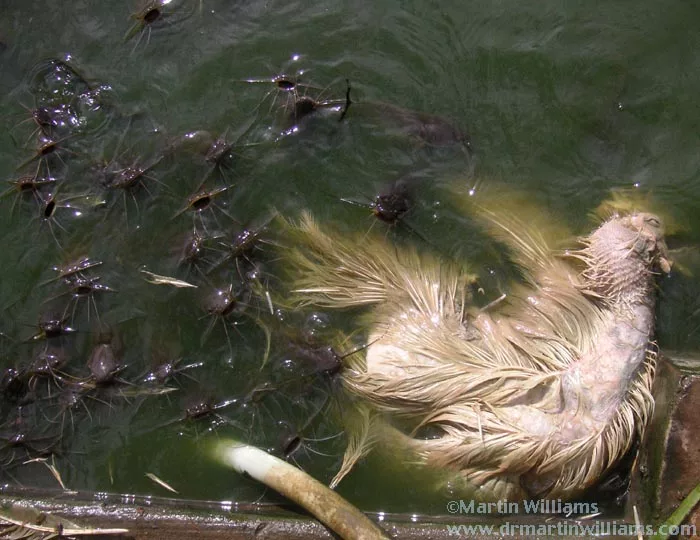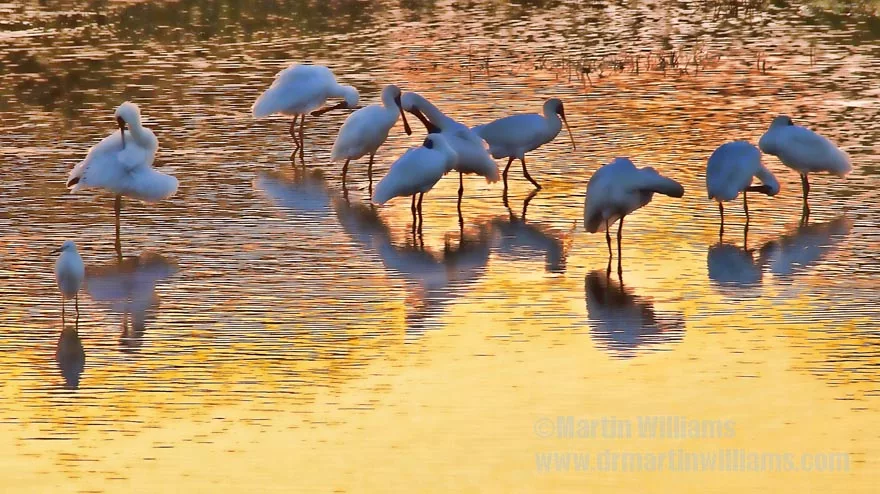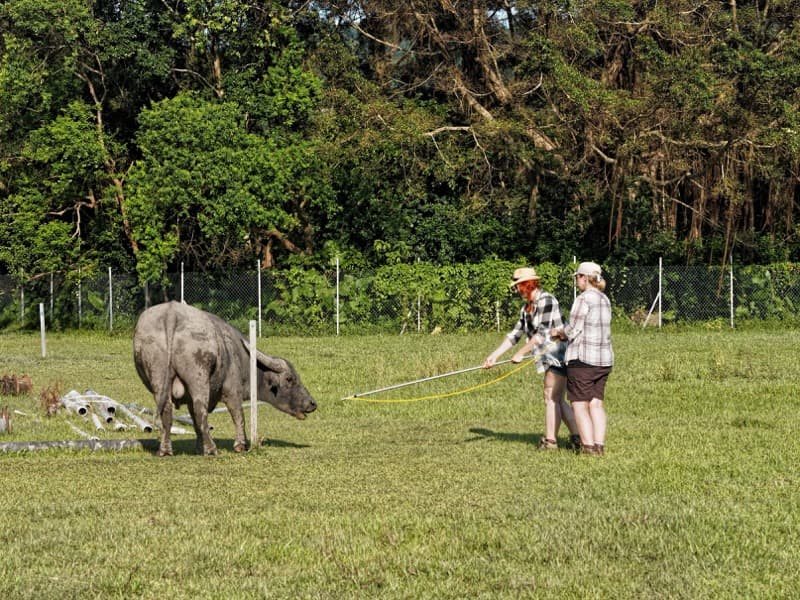1859 saw the publication of one of the world’s greatest books, On the Origin of Species by Means of Natural Selection, by Charles Darwin. It proved a milestone in science, and so influential that the main theory of biological evolution is often referred to as Darwinism.
Darwin anticipated his ideas would prove controversial, and there was indeed a flurry of intense criticism. The year after publication came a public debate about evolution, in which Thomas Henry Huxley – dubbed “Darwin’s Bulldog” for his staunch defence of natural selection – was reportedly asked whether it was through his grandfather or his grandmother that he claimed his descent from a monkey. Significantly, the questioner, Samuel Wilberforce, was a bishop in the Church of England.
To some extent, Darwin’s theory was a product of its time. Another great naturalist-explorer, Alfred Russell Wallace, simultaneously arrived at very similar notions after travels in South America and Indonesia. Both he and Darwin were influenced by Thomas Malthus, who argued that human population growth was limited by struggles to survive. In broad terms, the evolutionary theory they described involved individuals of a species varying from one another, and if the variations helped them survive they had more chance of passing on these traits, which could lead to species changing over time.
Like all scientific theories, Darwinism has been questioned and tested wherever possible. Among scientists, it has held up well, becoming a pillar of modern science. But this has not prevented attacks, chiefly from outside the scientific community.
Bold claims from a former atheist, and the Cambrian conundrum
On 11 November 2014, the South China Morning Post published one such attack, in a letter from Kevin Ma. To my mind, the letter featured leaps in logic, such as apparently suggesting there is no “struggle for existence”, and so natural selection cannot produce higher forms: “Therefore lower organisms including primates such as monkeys cannot evolve into human beings.”
Ma also claimed there was greater trouble for Darwin’s theory in the form of soft sponge embryos in a layer of Pre-Cambrian rocks, and asserted that, “Through scientific evidence alone, one can clearly see that evolution cannot produce the wonderful complexity that we see in all life and in our own bodies.”
These are bold claims, indeed. But it was also revealing that Ma described himself as a “former atheist” – so surely his main leap is a leap of faith, into a realm away from science. For science abounds with evidence that natural selection can produce astonishing complexity – and is not content with encountering something hard to explain and concluding this must be the work of one or more supernatural beings.
Fossils are a key source of evidence for evolution. While Darwin referred to the fossil record, he also noted that it’s incomplete. For instance, no ancestral forms of whales were known, and Darwin suggested their ancestor might have been a bear like creature that took to the water. Discoveries since Darwin’s time have included primitive whales, and even a four legged aquatic mammal that some believe is an ancestor of whales, but is closer to the hippopotamus than to bears.
One period in the fossil record proved especially puzzling to Darwin. Soon after the onset of the Cambrian, around 542 million years ago, it appeared there had been an “explosion” in the diversity of life. Summarising what has become known as “Darwin’s Dilemma”, he wrote: “To the question why we do not find rich fossiliferous deposits belonging to these assumed earliest periods prior to the Cambrian system, I can give no satisfactory answer.”
Creationists – aka intelligent design proponents – have seized upon this puzzling period as if it demolishes evolutionary theory, and implying that one day the supernatural being waved a magic wand and said, “Let there be shellfish, and trilobites, and crustacean-like critters.” The older soft-sponge fossils referred to by Ma suggest processes forming older rocks did suit fossilisation, but ancestral Cambrian life forms were mostly absent.
Yet recent research suggests that while the Cambrian was special, there is no real dilemma. Mechanisms for driving the burst of diversity have been suggested, such as increased calcium levels in oceans, as the sea flooded and eroded immense areas. Though fast, the “explosion” took far longer than a day. “We found that with improved dating and correlation of rock sequences, the short burst of appearances goes away,” said Susannah Porter, associate professor in the Department of Earth Science at UC Santa Barbara, USA, who was a co-author of a lengthy paper on the Cambrian Explosion. “Instead, appearances of the earliest skeleton-forming animals were drawn out over more than 20 million years.”
Even as evidence for evolution by natural selection accumulates, creationists argue more strongly for their supernatural designer, and the internet is awash with denunciations of Darwin. Religion inspired pseudoscience is tenacious.
Yet there is one thing all should agree on, particularly if you believe man was given dominion or stewardship over nature. The diversity of life is magnificent, and we humans should do all we can to safeguard it, not play a shameful role as the cause of the sixth mass extinction.
Published in Sunday Morning Post.
Early warnings of climate change
While climate change resulting from human activities might seem a new-fangled concept, there have been on-point predictions dating back many years.…
Ignoring Science Makes Global Climate Disaster as Inevitable as Titanic Submarine Implosion
Climate change has been prominent in worldwide news this summer (2023), notably as we have just lived through the hottest week…
Have you been bullied into health? Fear, quackery and Covid
So here we are with our modern-day wonder, the internet – where even with a smartphone, you can search for and…
Never mind the antimask-o-sphere. Science shows face masks help reduce Covid spread
Just had one of those silly Twitter “conversations” with someone who had position so fixed, impossible to change with facts. Yeah,…
A Covid scrapbook: snapshots from the crazy pandemic
I’ve read accounts of the Spanish Flu, which was the last major pandemic, mainly in 1918 [so over and done with…
Highly pathogenic bird flu variants mostly evolve in intensive poultry farming
Highly pathogenic bird flu variants evolve from regular, low pathogenic, bird flus, within intensive poultry farming.
Keep Your Underpants Duck Taped and Air Clean as Covid Wild Ride Continues
We’ve learned a lot about Covid, even developing vaccines. Yet Covid remains an issue, no matter how much we might wish…
Covid is airborne so ventilation and air filtration are important
Since early in the pandemic, I’ve been seeing scientists arguing Covid is airborne, even with hashtag #covidisairborne – including to counter…
Long Covid – info and links indicating major impact
Evidence is snowballing that Long Covid is also a serious issue, even affecting people in whom the disease initially appeared mild.
Perhaps Covid arose through lab leak of tweaked bat Coronavirus
Maybe humans tweaked bat coronaviruses in gain of function experiments, inadvertently creating Covid thro lab leak.
The Covid Conundrum: Endless Lockdowns, Let It Rip … or What?
Covid is airborne, which means that much as unprotected sex is a risk for HIV, unprotected breathing might result in Covid.
Science shows Covid including Omicron is Really Not the Flu
Some of the science showing Covid including Omicron is a huge issue; and one that looks set to be with us…
“Alarmist” Covid predictions outperform Covid deniers’ soothsaying
The disinfo downplaying Covid is often from rightwing, mainly money-minded folks who perhaps don’t care too much about actual people.
Covid virulence, vaccines and variants
Science can provide some insights into what may happen with Covid, along with ways to limit its impacts.
We’re in the Covid Era for the Long Haul
We’re in this for the long haul, with the virus like a relentless, invisible foe, ready to exploit errors, slip through…
My Strange n Surprising Summer Staycation with Cellulitis
rom quick pricking by unseen marine creature, to intense fever, and hospital stay for an infection deep within the skin.
Covid virulence, vaccines and variants
[Written for South China Morning Post on 6 January 2021] In January last year, as reports were emerging of the new…
The Viral Time Bomb – Pandemic of Our Time
Guan Yi, director of the State Key Laboratory of Emerging Infectious Diseases at Hong Kong University, has extensive experience of viruses;…
From China With Fear: the Wuhan Coronavirus Won’t Kill Us All
As news of Wuhan coronavirus emerges, evolutionary biology suggests potential for a pandemic, not killing high percentage of people.
Fightback Needed as Science and Life Support System Under Attack
Environmentalism is under assault; yet this planet is the only home we have; providing our food, air, water… It’s our life…
Secret World of Hong Kong Water Supply
Hong Kong’s water supply system has been vital to its development as a “world city”.
Hong Kong Belching Buffaloes n Bubbling Paddies and the Mystery Methane Rise
Prof Euan Nisbet leads a science team to Hong Kong in quest to help find why levels of potent greenhouse gas…




















